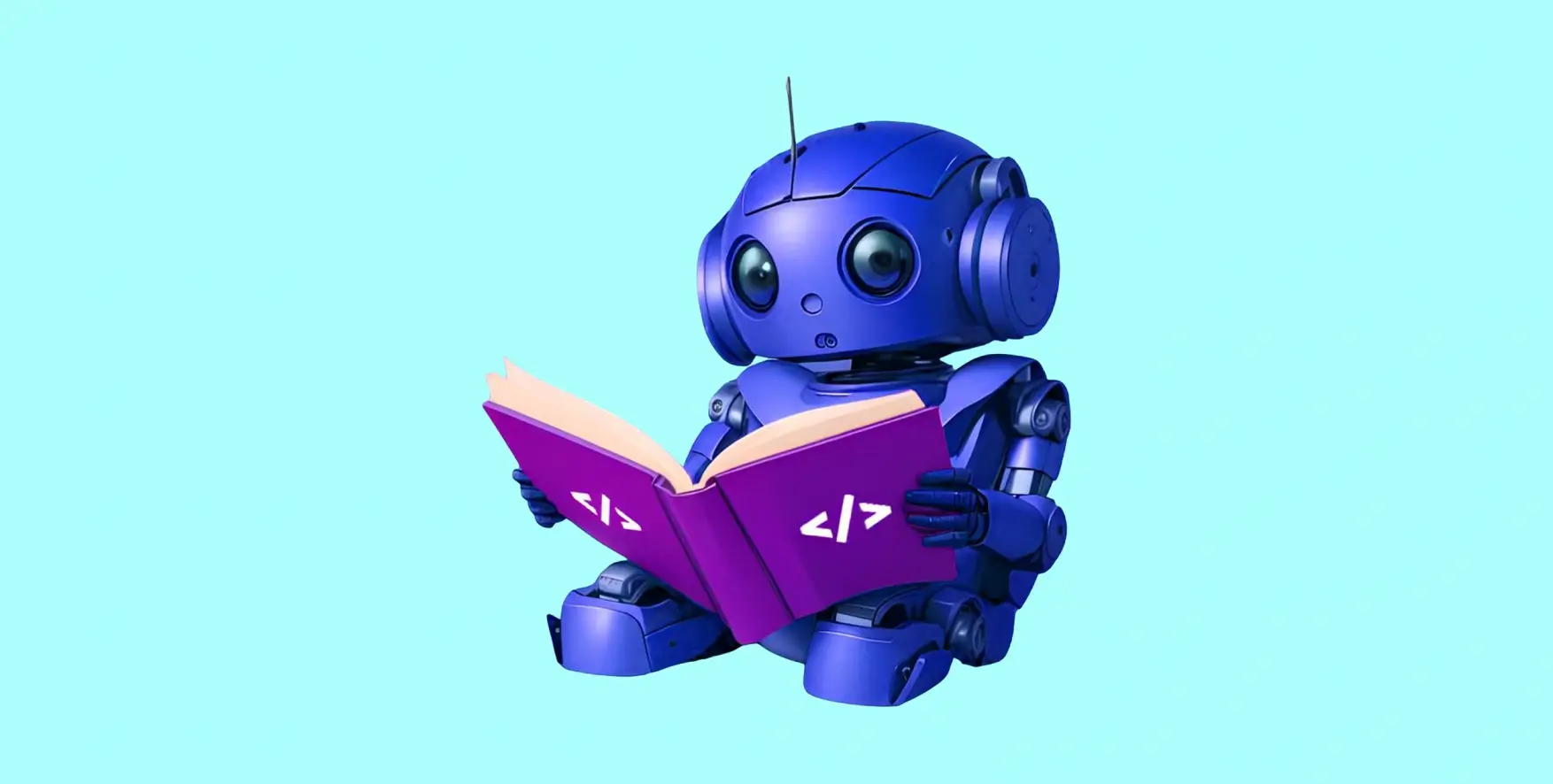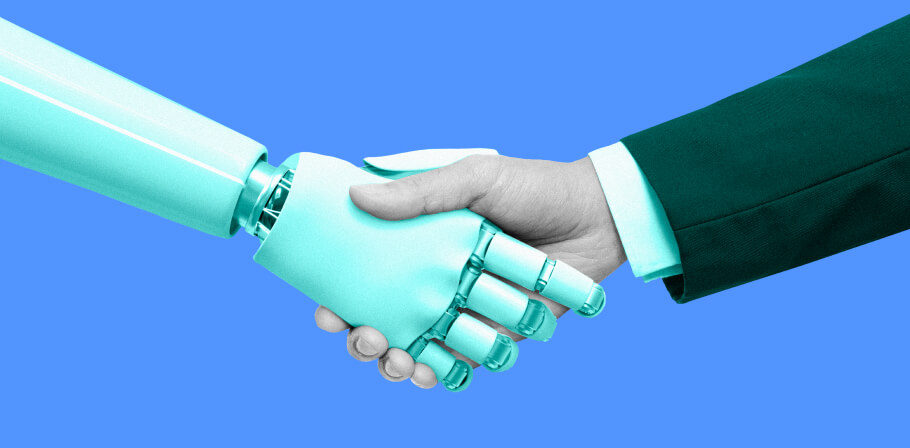An old adage used to be that “money makes the world go around” but today that can perhaps be rewritten to say “data makes the world go around”. Data is everywhere around us and the amount being generated continues to increase on a daily basis. Understanding what everything means and using that information to make decisions is next to impossible without the help of advanced technology.
Fortunately, a fairly new innovation has provided us with the technology and ability to not only understand all of the information being gathered but also optimize and see how to use AI to write better code and improve upon it. This technology is generative artificial intelligence, or generative AI for short. It has revolutionized various industries, including coding, programming language and software development, as we will describe in greater detail below.
What is generative AI?
Generative AI is a subset of artificial intelligence and uses AI coding tools to generate code that developers use to perform different functions. It uses machine learning algorithms to analyze large datasets and generate new outputs of code based on patterns found in the data. This technology has been widely used for tasks like predictive modeling, natural language generation, and image recognition. In the context of code optimization and review, generative AI can analyze large amounts of code and provide suggestions for improvement or identify potential errors.
ADOPT GENAI FOR SOFTWARE ENGINEERING IN 12 WEEKS
Enroll in our EngX GenAI Adoption Program and see your team’s productivity soar by up to 40%.
How your development team can use generative AI to their advantage
Generative AI offers a host of different benefits and use cases for development teams. Here are a few ways your team can use this technology to their advantage:
Use case 1: Automated code generation
Generative AI can assist developers by generating boilerplate code, allowing them to focus on more complex and creative aspects of development. Tools like GitHub Copilot use AI to suggest and generate code in snippets across multiple languages, reducing the time spent on repetitive coding tasks. This not only speeds up the development process but also ensures that the code written and the generated code adheres to best practices and standards.
Use case 2: Code refactoring
Another benefit of using generative AI in coding is its ability to automatically refactor code. This means restructuring existing code to improve its readability, efficiency, and maintainability. By analyzing coding patterns and best practices, the AI can suggest ways to optimize the code structure without changing its functionality. Refactoring is essential for maintaining code health, but it can be time-consuming. AI-powered tools like DeepCode analyze existing codebases, identify refactoring opportunities, and suggest improvements, ensuring code remains clean and efficient.
Generative AI significantly accelerates the writing code refactoring process by automating the identification of redundant or suboptimal code, enhancing code quality and performance. Companies utilizing AI for writing code refactoring can expect to realize productivity gains of 20-30%.
Use case 3: Bug detection and fixing
AI can significantly enhance the bug detection process. Machine learning algorithms trained on vast code datasets can identify common coding errors and vulnerabilities, suggesting fixes before the code reaches production. By automating bug detection, developers can reduce the time spent on debugging, leading to faster release cycles and more robust software.
Use case 4: API/3rd party integration
Having a single system or application in any business is very unlikely. Unfortunately, in these far too common instances, teams are often forced to use different systems for different functions, which can make things not only tedious but also very inefficient.
Traditionally, integrating disparate systems and APIs requires significant manual coding and testing, which can be time-consuming and error-prone. Generative AI, however, automates much of this process by generating the code based on snippets and scripts tailored to specific integration needs.
In addition, generative AI is able to quickly and accurately parse API documentation and generate the necessary code to connect systems. By analyzing the documentation, the AI can understand the requirements, endpoints, and data structures involved, creating seamless connections with minimal human intervention. This not only speeds up the integration process but also reduces the risk of errors that can occur when manually coding these connections. Overall, this automation reduces the workload on human developers, allowing them to focus on more complex and strategic tasks which can help make them and their teams more than 20% more effective.
How does generative AI improve software development?
Generative AI's impact on software development is profound, offering tangible improvements in several key areas. Let's take a closer look at how generative AI can benefit the development process.
Example 1: Improved code generation
One of the biggest challenges in software development is writing efficient and error-free code. Traditional methods require developers to manually write every line of code, which can be time-consuming and prone to mistakes. With generative AI, software developers can use algorithms to assist in generating code, thus allowing developers for quicker and more accurate development.
Example 2: Enhanced code review
Testing is an essential part of the development process, but it can also be one of the most tedious and time-consuming tasks. AI tools streamline the code review process by automatically assessing code quality and consistency using AI for coding. They can detect issues like syntax errors, coding standard violations, and potential security risks. This leads to faster and more thorough reviews, allowing human reviewers to focus on higher-level concerns. The improved speed of code reviews translates to shorter development cycles and quicker delivery of features and updates.
Example 3: Performance optimization
AI algorithms can analyze code performance, identifying bottlenecks and suggesting optimizations. For instance, AI-driven performance profiling code optimization tools can monitor runtime behavior of Python code, pinpoint inefficient code segments, and recommend enhancements to boost performance. This results in faster and more responsive applications, improving user experience and reducing resource consumption.
Example 4: Improved speed and quality
One of the most significant advantages of using generative AI in both code generation and optimization is the dramatic improvement in both the speed and quality of code generated in software development.
- Speed: Automated code generation tools can quickly produce high-quality code snippets, reducing the time developers spend on routine tasks. AI-powered refactoring tools streamline the process of improving existing code, enabling faster iterations and updates. Additionally, AI-driven bug detection and performance optimization tools expedite the identification and resolution of issues, leading to shorter debugging sessions and faster release cycles. The cumulative effect of these improvements is a more agile development process, where teams can rapidly respond to changing requirements and market conditions.
- Quality: While speed is crucial, the quality of the code is equally important. Generative AI enhances code quality through several mechanisms. By suggesting code snippets that adhere to best practices and industry standards, AI tools help maintain a high level of code consistency and reliability. Automated code reviews ensure that potential issues are caught early, reducing the risk of bugs and vulnerabilities in the final product. AI-driven performance optimization tools contribute to creating more efficient and responsive applications. The combination of improved code quality and performance leads to more robust software while also improving overall customer satisfaction.
Popular generative AI tools for code optimization
Several generative AI tools have emerged as leaders in code optimization, each offering AI models with unique features to assist developers.
Tool 1: GitHub Copilot
GitHub Copilot is an AI-powered code completion tool developed by GitHub in collaboration with OpenAI. It uses machine learning to assist developers with code completion by providing code completion suggestions and autocompletion as they write code. Here are the key features and aspects of GitHub Copilot:
Key features of GitHub Copilot
- AI-powered code completion: GitHub Copilot uses the OpenAI Codex model to understand the context of the code being written and provide relevant code completions. It can suggest whole lines or blocks of code, reducing the time developers spend on boilerplate and repetitive tasks.
- Support for multiple programming languages: GitHub Copilot supports a wide range of programming languages, including JavaScript, Python, TypeScript, Ruby, Go, and more. This makes it versatile and useful for developers working in different tech stacks.
- Context-aware suggestions: The tool is context-aware, meaning it takes into account the surrounding code to provide more accurate and relevant suggestions. It can understand comments, function names, and variable names to offer contextually appropriate code.
Benefits of using GitHub Copilot
- Increased productivity: By automating the generation of boilerplate code and reducing the need for repetitive coding tasks, GitHub Copilot can significantly increase a developer's productivity. This allows developers to focus on more complex and creative aspects of their projects.
- Enhanced learning: For new developers or those learning a new language or framework, GitHub Copilot can serve as an educational tool by showing how certain coding problems are typically solved. It provides practical examples that can help in learning and understanding new concepts.
- Speeding up development: With real-time code suggestions, developers can write code faster. The tool helps in quickly prototyping and iterating on ideas, leading to faster development cycles.
Tool 2: DeepCode
DeepCode is an AI-powered code review tool designed to help developers write cleaner, more efficient, and secure code. It leverages various machine learning models and advanced static analysis techniques to identify potential issues in codebases and suggest improvements. Here are some key features and aspects of DeepCode:
Key features of DeepCode
- Automated code review: DeepCode continuously scans code for potential issues, including bugs, security vulnerabilities, code smells, and performance bottlenecks. It provides real-time feedback to developers, helping them catch problems early in the development process.
- Machine learning and static analysis: The tool uses a combination of machine learning algorithms and static code analysis to understand the context of the code and provide relevant suggestions. It learns from millions of open-source projects to improve its accuracy and breadth of knowledge.
- Support for multiple languages: DeepCode supports a variety of programming languages, including Java, JavaScript, Python, TypeScript, and more. This makes it a versatile tool for developers working in different tech stacks.
Benefits of using DeepCode
- Improved code quality: By providing actionable feedback on potential issues, DeepCode helps developers write higher-quality code that is easier to maintain and less prone to bugs and security vulnerabilities.
- Increased development speed: With real-time feedback and automated code review, developers can quickly identify and fix issues, reducing the time spent on manual code reviews and debugging.
- Enhanced security: DeepCode’s focus on security vulnerabilities helps to ensure that applications are more secure, protecting against common threats and exploits.
Tool 3: CodeGuru
Amazon CodeGuru is a machine learning-powered tool from Amazon Web Services (AWS) designed to assist developers in improving the quality and performance of their code. It offers two main components: CodeGuru Reviewer and CodeGuru Profiler. Here are the key features and functionalities of each component:
CodeGuru Reviewer
CodeGuru Reviewer uses machine learning to perform automated code reviews and identify potential issues in the code. Here are its primary features:
- Automated code review: CodeGuru Reviewer analyzes pull requests and provides recommendations to improve code quality. It identifies potential issues such as bugs, security vulnerabilities, and best practice violations.
- Security detection: The tool helps identify security vulnerabilities within the code, such as hard-coded secrets, and suggests remediation steps to address these vulnerabilities.
- Best practices and recommendations: CodeGuru Reviewer offers recommendations based on AWS best practices and common coding standards. It helps developers write more efficient, secure and maintainable code.
CodeGuru Profiler
CodeGuru Profiler focuses on improving the runtime performance and efficiency of applications. Here are its primary features:
- Performance profiling: CodeGuru Profiler collects runtime performance data from applications and identifies performance bottlenecks. It provides visualizations and detailed reports on how resources are being used.
- Cost optimization: The tool suggests ways to optimize resource usage, which can help reduce operational costs. For example, it can identify inefficient methods and suggest more efficient alternatives.
- Anomaly detection: CodeGuru Profiler can detect unusual patterns in application behavior, such as memory leaks or CPU spikes, and alert developers to potential issues before they affect users.
Benefits of using Amazon CodeGuru
- Improved code quality: By automatically reviewing code and suggesting improvements, CodeGuru helps developers write cleaner, more maintainable code.
- Enhanced security: CodeGuru Reviewer’s ability to identify security vulnerabilities helps ensure that applications are more secure, reducing the risk of breaches and attacks.
- Performance optimization: CodeGuru Profiler’s insights into runtime performance allow developers to optimize their applications, leading to faster and more efficient software.
MAXIMIZE YOUR ROI WITH GENAI ADOPTION
Explore how genAI can deliver significant returns on investment by enhancing productivity, reducing costs, and improving software quality.
Best practices for generative AI code optimization
Implementing generative AI for code generation or optimization requires a strategic approach to maximize its benefits. Here are some best practices to consider:
Example 1: Integrating AI tools into the development workflow
Seamlessly integrating AI tools into your development pipeline ensures that code optimization becomes a natural and effortless part of the process. This includes configuring the tools to run automated scans using advanced algorithms during code commits, pull requests, and continuous integration workflows. By embedding cutting-edge AI tools into the development process, developer teams now can continuously monitor, analyze, and enhance code quality, ensuring optimal performance and efficiency in software development projects.
Example 2: Balancing AI and human expertise
While AI tools undeniably provide substantial advantages in various fields, maintaining human oversight is paramount for quality assurance. Developers must meticulously scrutinize AI-generated code suggestions and recommendations to confirm their alignment with specific project requirements and coding standards. By harmoniously integrating AI's efficiency with human judgment coding experience, the outcome is a synergy that yields highly optimized results. This collaborative methodology not only has AI code that capitalizes on the inherent strengths of AI and human expertise but also serves as a catalyst for the development of superior-quality software products.
Example 3: Continuous learning and adaptation
AI models thrive on data and continuous learning. Regularly updating AI tools with new training data and feedback from developers enhances their accuracy and effectiveness. Encourage a culture of continuous improvement where AI tools evolve alongside your codebase. This iterative approach ensures that AI tools remain relevant and effective as the codebase and development practices evolve.
Boost your dev team efficiency with our EngX GenAI Adoption Program
To fully harness the power of generative AI, consider adopting a comprehensive program like the EPAM EngX GenAI Adoption Program. This program offers tailored solutions to integrate AI-driven tools into your development processes, enhancing developer productivity and code quality.
Our EngX GenAI Adoption Program provides:
- Customized AI tool integration
- Training sessions for developers
- Continuous support and updates
- Performance monitoring and optimization
By enrolling in this program, your development team can achieve unprecedented efficiency and innovation, staying ahead in the competitive software landscape.
Conclusion
Generative AI is transforming the way we approach code optimization, offering tools and techniques that enhance efficiency, quality, and maintainability. By understanding and leveraging these AI capabilities, businesses can streamline their development processes, reduce technical debt, and deliver superior software products.
Incorporate generative AI into your code optimization strategy today to unlock the full potential of your development team. Embrace the future of software development with AI-driven innovation.

Expert digital communicator and editor providing insights and research-based guides for technology buyers globally.
Expert digital communicator and editor providing insights and research-based guides for technology buyers globally.
Explore our Editorial Policy to learn more about our standards for content creation.
read more












